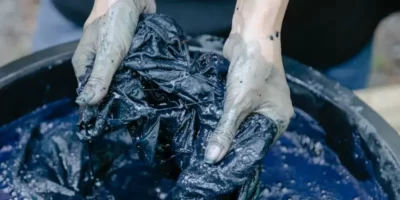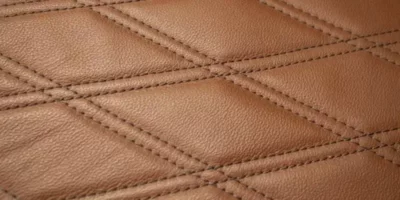What are the best ways to clean stainless steel with home remedies? Our guide shows what you can use to clean and polish — and what to avoid doing!
Dirty stainless steel is no longer as stainless as its name suggests. We show you how you can easily clean it without chemicals.
How to clean stainless steel easily
Especially in the kitchen we are dealing with a lot of stainless steel. Be it the wash basin, the refrigerator, the dishwasher, the cutlery or the saucepans – many things in the kitchen are made of stainless steel and are visually affected by daily use. The unsightly stains that make the material unsightly range from grease splashes and fingerprints to rust film. The stains can be removed easily with simple means that everyone has at home.
Best ways to clean stainless steel with home remedies
To make the stainless steel look good again, you can make soiling such as fingerprints, streaks, lime and grease splashes disappear when you clean stainless steel with home remedies.
Potato
Light dirt on stainless steel surfaces can be easily cleaned with half a potato. Simply rub the impurities with the damp side of a halved potato.
Tip: Alternatively, you can also use potato starch from the package. Take this up with a damp sponge and rub it on the stainless steel surface.
Let the starch soak briefly and then wipe it off with a damp cloth. The surface shines in new splendor as this is one of the best ways to clean stainless steel with home remedies.
Baking soda
Grease stains are quite stubborn and cannot always be removed with detergent. Try cleaning the stains with baking soda (sodium bicarbonate or bicarb soda). To do this, mix three tablespoons of baking soda with a tablespoon of water to form a paste. Apply this to the stains and let the baking soda take effect and then wipe with clear water.
The combination of water and baking soda creates a soda-alkaline solution that splits fats and proteins.
Tip: Alternatively, you can also apply baking soda directly to the contamination with a damp sponge.
Vinegar
Wherever a lot of water is used, lime stains do not fail to appear. You don’t have to use the decalcifier to remove them. To do this, mix vinegar essence and water in a ratio of 1: 3 and pour the mixture into a spray bottle. Spray the lime stains with it. You can then easily wipe off the loosened dirt with a rag.
Tip: Vinegar not only removes limescale stains, it also has a disinfecting effect.
Citric acid
You can get rid of limescale and other coarse dirt with citric acid. To do this, make a mixture of citric acid and water and apply it to the affected areas with a rag. In the case of very stubborn stains, it is advisable to leave the mixture on for about ten minutes.
Tip: Always weargloveswhen using citric acid.
Use cola
Stainless steel does not actually rust. Nevertheless, cutlery occasionally comes out of the dishwasher with superficial rust. The popular brown soft drink can help here. Either put the cutlery in the cola and the phosphoric acid it contains dissolves the rust film. You can also simply moisten a cloth with cola and rub it over the stains until they are gone. Then rinse the cutlery under clear water and dry it well.
Steer clear of steel wool
If food is burnt into the saucepan, you should never clean it with steel wool. So you get the dirt well solved, but they also scratch the surface and this then leads to rust . This would be very annoying, especially with high-quality and expensive pots. So it is better to soak the pot with water and detergent for about 15 minutes and then try to loosen the dirt carefully.
Tip: Don’t use scouring milk and disinfectant. These can attack the material.
Be careful with brushed and oxodized stainless steel
If you want to clean brushed stainless steel, such as on the fridge, you have to be careful. Therefore, always rub the above-mentioned household remedies in the direction in which the steel is ground in order to be able to completely remove the dirt.
Attention: Black oxidized stainless steel or burnished steel must not be cleaned with acidic cleaners!
Polish stainless steel with olive oil
When you have got the stainless steel surfaces clean again, you can give them a polish. And here, too, you don’t have to look for chemicals. Simply drizzle a few drops of olive oil on a soft cloth and spread it over the surface. After five minutes of exposure, you can work the oil into the material using a soft cloth in circular movements in the direction of grinding. The olive oil makes the surface shine without leaving a greasy film. At the same time, it ensures that new dirt can no longer adhere to it as well.
Cleaning stainless steel jewelry
We usually wear our jewelry, such as earrings, bracelets and chains, close to the body. As a result, dandruff, perfume, sweat, make-up and body lotion are deposited on it and make the jewelry look dull or even discolored. The high-quality stainless steel jewelry that you get from jewelers is also not exempt from such contamination. It is all the more important that the jewelry shines in new splendor again.
The easiest way to clean your stainless steel jewelry is to clean it in a water bath. Put enough water with a few drops of detergent in a bowl and put your jewelry in it. Depending on the degree of soiling, leave it in for about 10 to 30 minutes. Then wash the jewelry under running cold water and use a cotton swab to remove dirt, debris and dirt that is hidden in small cracks. Once all impurities have been removed, you can dry the jewelry with a soft microfiber cloth and polish it to a high gloss with a dry microfiber cloth or cotton wool.
Attention: If moisture remains on the stainless steel jewelry, water stains can appear on it.




